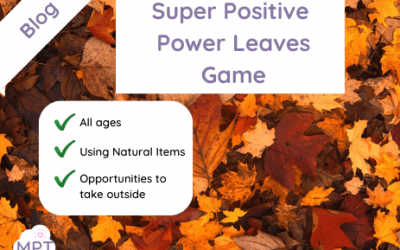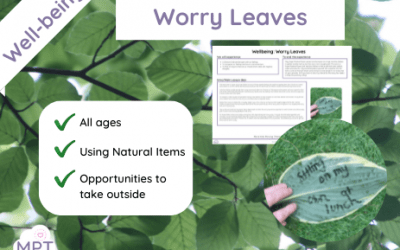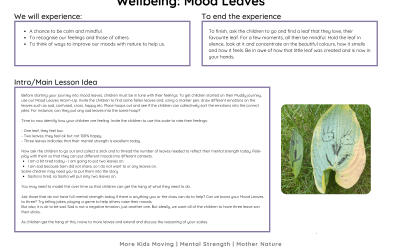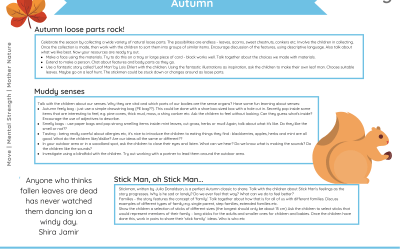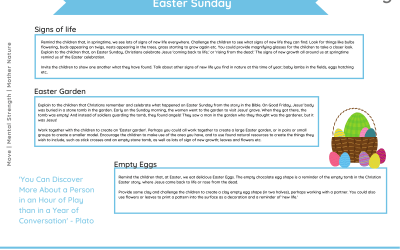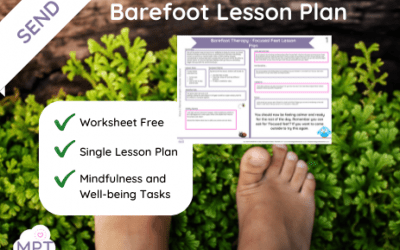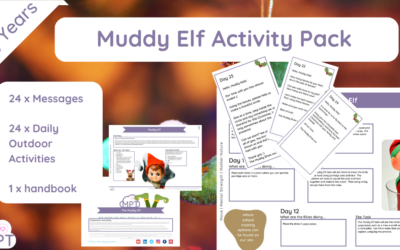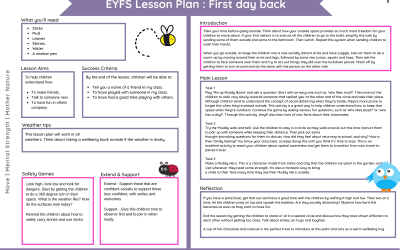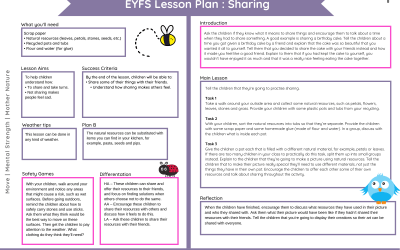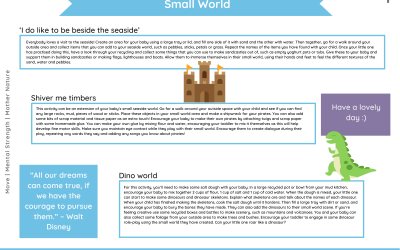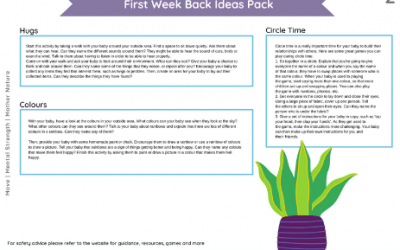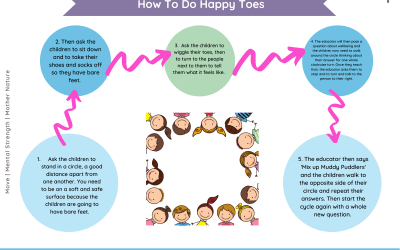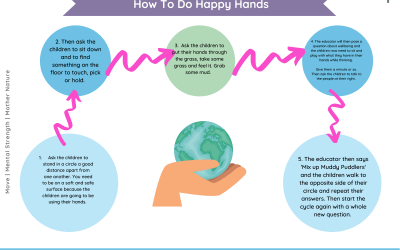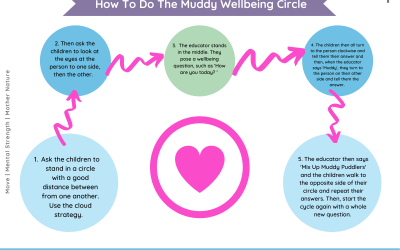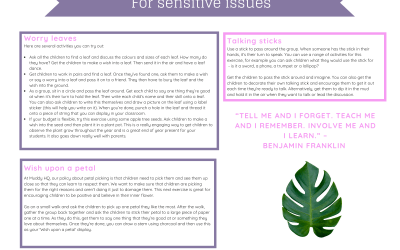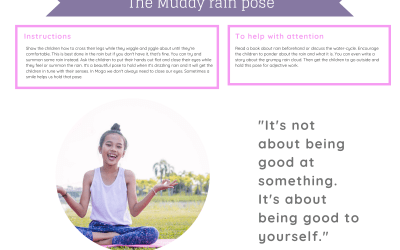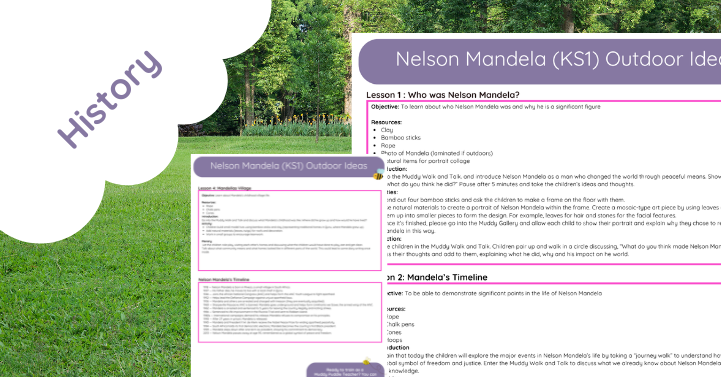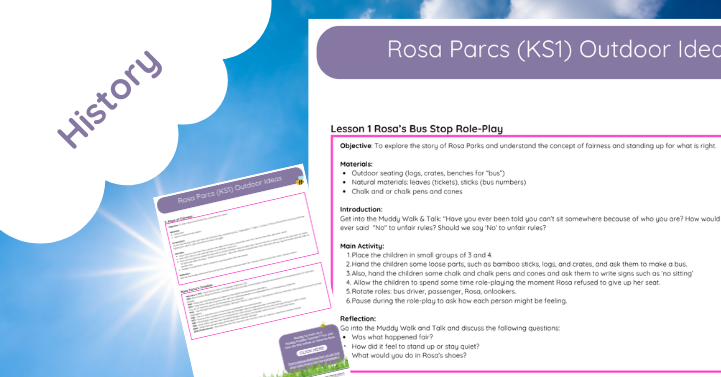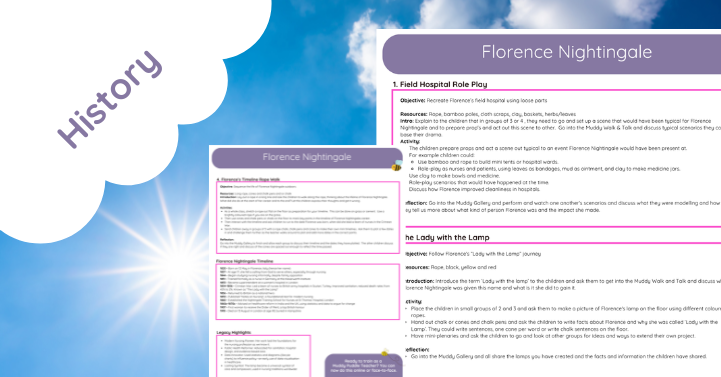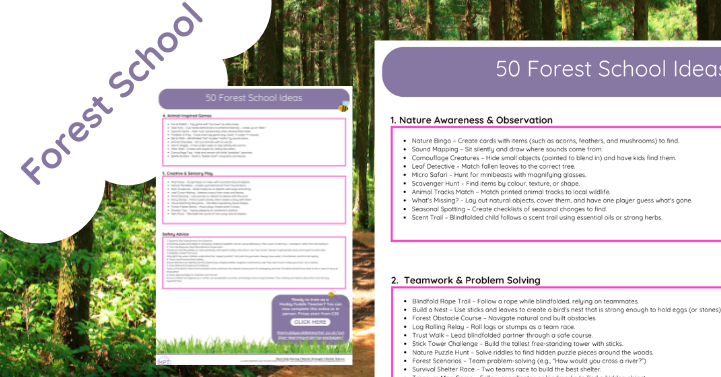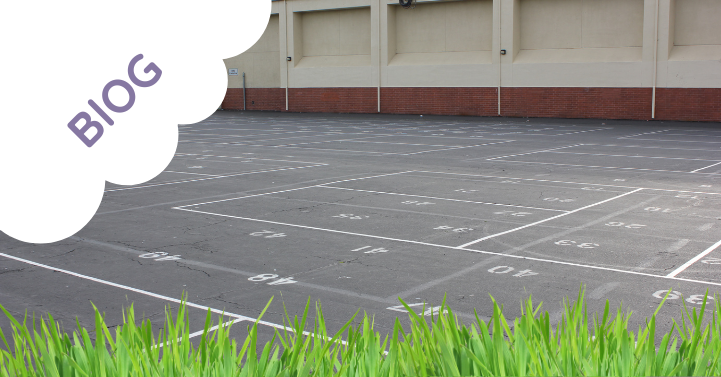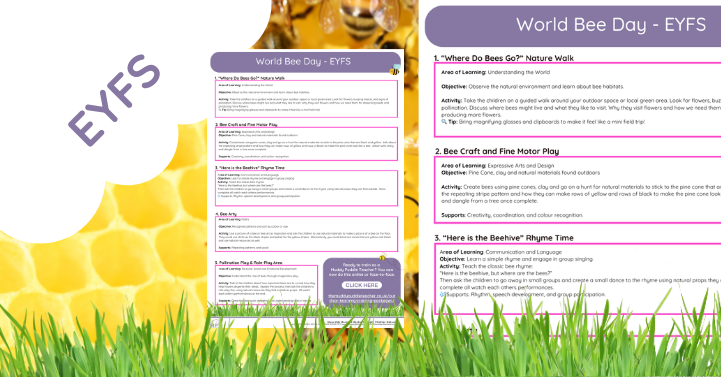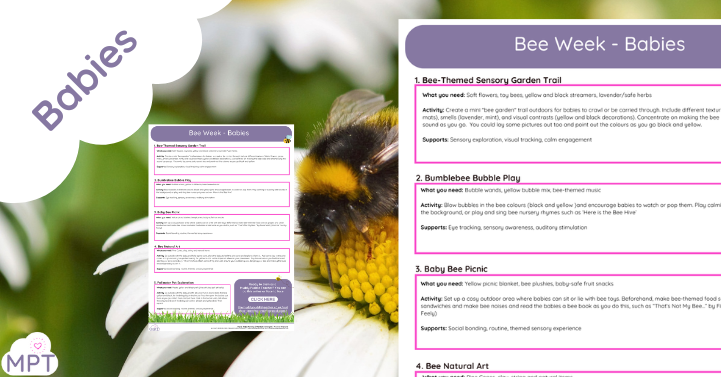Super Positive Power Leaves Play 'Super Positive Power Leaves' and end your lesson on a high. ?Ask the children to...
Well-being: Worry Leaves
Sep 1, 2021
Worry Leaves This lesson plan will cover the following objectives: A chance to talk and be open with our feelings. To...
Well-being: Mood Leaves
Sep 1, 2021
Mood Leaves Use this natural and nurturing lesson plan and let nature help the children to connect with their...
S1E3: Let’s chat about the 7 Strands with June O’Sullivan MBE
Apr 29, 2021
An inspiring speaker, author and regular media commentator on Early Years, Social Business and Child Poverty, June...
EYFS All About Me
Jan 6, 2021
Exploring the "All About Me" Topic in Early Years Education The "All About Me" topic is a fundamental theme in early...
EY Easter Story
Jan 6, 2021
Early Years Easter Story In a nutshell: Taking the Easter Story outside may be just the inspiration you need to put an...
Focused Feet Barefoot Therapy
Dec 30, 2020
Focused Feet Barefoot Therapy One of the easiest ways to improve our well-being is simply to remove our shoes!...
Filling up a Wellbeing Bucket (Early Years Outdoors)
Dec 7, 2020
Filling up a wellbeing bucket could not be more perfect for The Muddy Puddle Teachers. We are all about wellbeing and...
Muddy Elf (Nursery&School Pack)
Nov 30, 2020
Use this incredibly innovative and creative Muddy Elf Ideas Pack to get your children outside daily to enjoy an Elf...
*FREE*First day back Lesson Plan
Oct 23, 2020
Use First day back Lesson Plan to settle your children back in the Muddy Way and to focus on friendship.
*FREE*Sharing Lesson Plan
Oct 22, 2020
Use Sharing Lesson Plans to get the best out of your class in an active, natural way.
Up-cycling Small World Play
Sep 30, 2020
Use Up-cycling Small World Play to help your baby and tot enjoy some free and creative learning.
Tots First Week Back
Sep 8, 2020
Use Tots First Week Back to help you generate ideas that will help the littles ones settle in and get the most out of...
Happy Toes (Sensory Ideas Pack)
Jul 19, 2020
A strategy to help children open up and talk
Happy Hands Wellbeing Method (All ages)
Jul 19, 2020
A speech and language method to help children open up and talk
Muddy Wellbeing Circle (All ages)
Jul 19, 2020
A Muddy method to help children open up and talk
Outdoor Circle Time ideas pack
Jul 19, 2020
Babies & Tots Gross Motor Skills
Outdoor Yoga childrens (All ages)
Jul 17, 2020
Traditionally Yoga has always been done outdoors. In the fresh air where nature can reinforce your breathing and nurture your inner calm. Use this pack for some child-orientated muddy ideas that will support mental and physical well-being.


